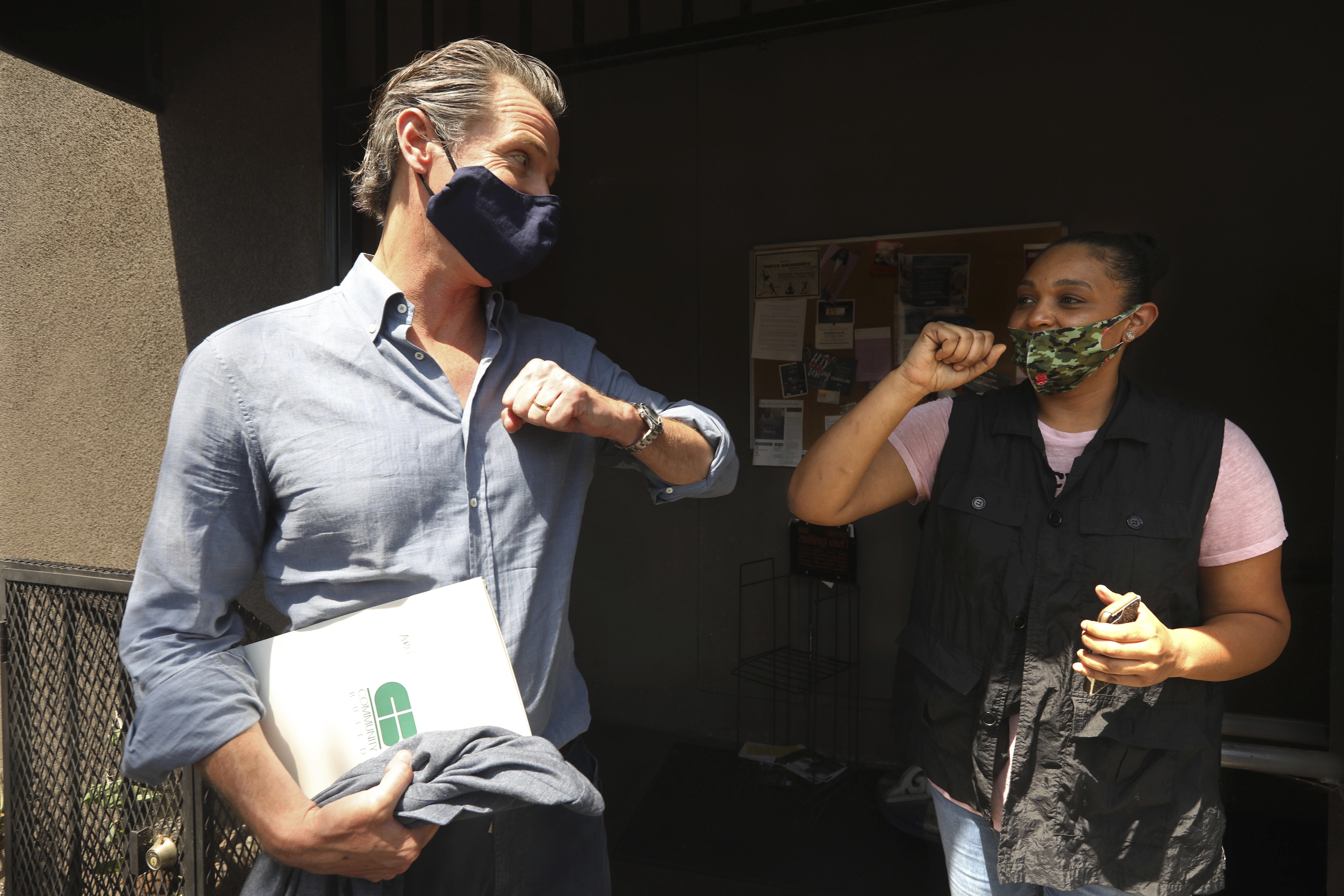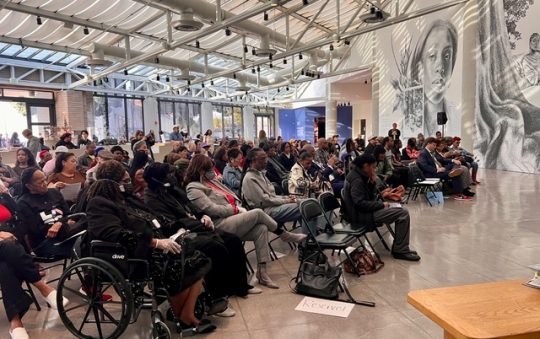Gov. Gavin Newsom outlines his plan to ignite positive change in law enforcement arena


Erasing all doubt about actions needed following the killing of George Floyd, California Governor Gavin Newsom announced his unequivocal support for criminal justice and policing reform on June 5.
According to Newsom, his staff will work towards developing a statewide standard for policing peaceful protests and ending the carotid hold, the major factor leading to Floyd’s death on May 25.
Video footage and witness statements revealed that Floyd died during an arrest where Derek Chauvin, a White police office in Minneapolis, Minnesota, kneeled on Floyd’s neck for 8 minutes and 46 seconds. The video went viral, sparking international protests and marches against police brutality, especially against African Americans.
As the demonstrations erupted, Newsom said he met with elected officials, community leaders, social justice activists and law enforcement members to discuss how to attain real reform during what he called, “a unique and special responsibility here in California to meet this historic moment head-on.”
He spoke with the Los Angeles Sentinel on June 8, to outline how he hopes the state can move forward by reimagining policing.


Explaining his vision for reimagining criminal justice reform, Newsom said, “One thing I don’t want to see happen is that we revert back to our original form; that somehow, we don’t recognize that people have lost patience and that people are demanding a sense of urgency at this moment. What they want is ‘real,’ not ‘rhetoric.’
“I think the foundational principle reflected is the commitment to advance reform, in real time, because people have lost not only patience, but they’ve lost trust and there is nothing more precious than trust,” Newsom said.
“We can meet this moment head-on and seize this moment of justice to the cries from millions of Americans, [who] for decades, that have suffered with apathy and with neglect from people in positions like myself and others across this country. That’s the spirit that drove the comments and our pointed decision-making as it relates to making immediate reforms.”
His proposal will follow the strategy that Newsom and his staff joined with Assemblymember Shirley Weber to win approval last year of AB 392, the nation’s strongest standard for police use of deadly force. The bill redefined the circumstances that peace officers can employ to defend against an imminent threat of death or serious bodily injury. The legislation resulted from collaborations with the California Legislative Black Caucus, the California Latino Legislative Caucus, national experts, community leaders, law enforcement and journalists.
“Last year, we proved that we can get something done despite a lot of opposition. This last year [there] was some progress in the state, but there is a deeper sense of urgency to move forward in the next weeks, months, and years,” said Newsom.


Another factor in reimagining policing lies in changing how culture views the issue of public safety, he said. The governor’s goal is to lead society towards making a phone call to the police a last resort instead of the person’s first action when confronted with social issues such as mental illness or homelessness.
“We’re having conversations on de-militarizing local and state law enforcement. This goes to a broader de-funding movement that I think goes to what we want from law enforcement and what can public safety look like without a law enforcement focus first,” noted Newsom.
“What can we do on the social service side that change the worlds of responsibility, not just the worlds of engagement, so that law enforcement is not the first phone call, but the last phone call with someone dealing with the crisis of addiction and mental health.”
Admitting that some members of law enforcement may resist his plan, Newsom said that his staff he would reach out the various factions, which included police unions, involved in the passage of AB 392 to “bring law enforcement to the table and build a bridge of trust to work out those differences.”
Other objections may come from the Black community and their supporters, insisting the new reforms are not enough, and in response, Newsom wholeheartedly agrees with that opinion. “They’re likely to be right and that doesn’t make our efforts wrong, but it furthers the conversation,” the governor said.
“I have deep respect for people who say, ‘Good enough never is.’ When we passed these laws last year, we didn’t end the distrust in community policing or the use of force against the Black and Brown community, particularly the Black community,” noted Newsom.
“So, we have to change the culture. This is a long-term commitment, not just a passing interest – a commitment to resolve and aggressively apply our ideals. Program passing is not problem solving. We have to foundationally change the way we conduct ourselves.”

Also, Newsom acknowledged that more action is needed, noting that additional reforms around police practices, educational equity, economic justice, health equity and more must be addressed with urgency.
“All of these issues about disparities intersect, particularly in the Black community. All of these issues run concurrent. We cannot just focus on criminal justice reform. We have to deal with these foundational issues in a much more comprehensive manner. These are systemic issues that be have to met head-on as well,” he said.
In response to what he is expecting from African Americans to move these issues to the forefront, the governor insisted that the responsibility to change is not on the Black community.
“The Black community doesn’t need to change,” he said, “we need to change, our institutions need to change, and our leaders need to change the way we conduct ourselves. So, I ask for nothing from the Black community except to hold us to account and a higher level of expectation. Nothing more.
“The Black community’s conducted themselves in such extraordinary ways that it would be demeaning for me to suggest that I expect anything from the community. I need to do better and to be more bold and all I ask from the community is to expect nothing less than that.”
Criminal justice reform has been a key priority of Newsom’s first year in office. He placed a moratorium on the death penalty, citing racial and economic disparities in how it was applied. He proposed to close the Division of Juvenile Justice and proposed closing two state prisons.
In his May Revision budget, Newsom proposed expanding opportunities for rehabilitation and shortening prison time for offenders participating in treatment programs, in education programs and otherwise engaging in good behavior; as well as increasing access to higher education for young people who are incarcerated.
Managing Editor Brandon I. Brooks contributed to this report.







